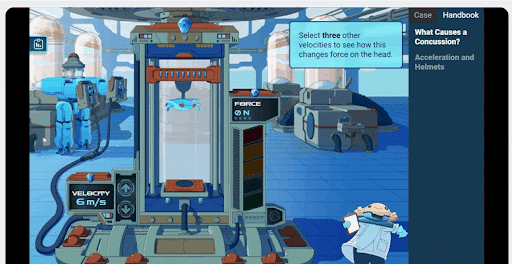
Math and science go together, like salt and pepper or day and night. When you think of one, you naturally think of the other. Math and science work together to analyze data, develop models, and make sense of the world around us.
Is math needed in science?
Math is essential for understanding scientific concepts. It is considered the language of science. Math in science sets the foundation for scientific understanding, research, and critical thinking. STEM professionals use precise mathematical processes to formulate theories and interpret scientific data. The two partner together to enable clear communication and thorough analysis.
Why do we use math in science?
According to the Next Generation Science Standards (NGSS), crosscutting concepts help students develop a coherent understanding of the natural world. NGSS emphasize conceptual understanding of core scientific ideas rather than memorizing facts. The NGSS focus on helping students develop a deep understanding of scientific concepts and apply them to real-world problems.
This reinforces the way scientists work to explain the natural world using systematic observation and experiment. Because much of the data scientists collect is numerical, math becomes the center of the process. Conceptual understanding helps students develop a bigger picture of the content.
Within NGSS, there is a three-dimensional approach to learning science: Practices, Disciplinary Core Ideas, and Crosscutting Concepts. These dimensions are combined to form each standard or performance expectation. They work together to help students build a deep understanding of science.
Five ways math and science work together
Once you start paying attention, seeing the connections between math and science is easy. Your students use the two without even realizing that they’re working as mathematicians AND scientists! Here are just five ways that math and science work together.
- Data analysis and statistics: Scientists collect data and use mathematical concepts to draw conclusions.
- Geometric principles in science: There are many ways to create fun and engaging lessons with science and geometry concepts. Look for symmetry in nature, create crystal structures, or analyze biological patterns.
- Algebra and chemistry: Chemical equations often represent balanced chemical reactions, which rely on algebraic principles to ensure mass conservation.
- Motion, change, and calculus: To describe how quantities change over time, like velocity and acceleration in physics, look no further than calculus.
- Mathematical modeling: This is an effective way to use math to study and explain real-world scenarios. It makes complex scientific phenomena easy to understand!
Real-world application of math through science
Transform math lessons into captivating, real-world experiences with Gizmos' vast collection of online interactive math simulations! Our intuitive math Gizmos spark curiosity and enhance comprehension through immersive and authentic visualizations.
With math and science virtual labs tailored for different grade levels, integrating math and science becomes a breeze. Gizmos engage students by making the information relatable as they conquer mathematical challenges and complex scientific concepts with ease.
Conceptual math without numbers
Conceptual math focuses on explaining why math operations work rather than teaching students how to solve problems by following a series of steps. In contrast, procedural math is about performing a process. Conceptual math is necessary for students to build a framework of relationships between math concepts, patterns, and procedures, connecting prior knowledge with new ideas to what they already know.
Science helps to bridge the gap and integrate math with the context of science. Students work with fewer calculations and more mathematical relationships. Conceptual math extends computational thinking into science concepts. In the Tackling Concussions: Testing Helmet Design Using Laws of Motion STEM Case, students use conceptual math to learn about the physics behind concussions and helmet function.

Tackling Concussions: Testing Helmet Design Using Laws of Motion STEM Case
Data analysis and interpretation
Scientists collect data and use math to analyze and interpret it statistically, looking for patterns and relationships between variables. Guess what? Science experiments also require students to collect, analyze, and interpret data. Gizmos STEM Cases makes data analysis and interpretation authentic by allowing students to assume the role of a scientist trying to solve real-world problems.
Science fuels curiosity
Curiosity combined with science creates a powerful thirst to explore the world and how it works. Scientific exploration sparks curiosity and can motivate students to learn math skills to prove their hypothesis or answer their questions. It brings progress through questioning, exploration, and innovation. Curiosity drives scientists in the quest for knowledge and discovery.
Interdisciplinary learning enhances problem-solving
Interdisciplinary learning enhances problem-solving abilities because students approach complex issues from multiple perspectives. Integrating math into science lessons helps students see how knowledge is connected, enriching problem-solving and critical-thinking skills. Through an interdisciplinary approach, students can compare and contrast information across different disciplines. This also allows for creativity and adaptability during the learning process.
Why math is critical for future success in science
Math provides scientists with tools for research. Mathematical methods are needed to formulate theories, build models, and interpret data. Mathematical equations and formulas are used to identify patterns and draw meaningful conclusions from science experiments. Math provides a structured approach to creating models that simulate real-world systems. Scientists can find and analyze solutions by breaking down complex questions into smaller steps.
Support STEM learning with Gizmos
Gizmos make math and science come to life for students in grades 3-12. With a library of over 550 virtual simulations, students learn by seeing, doing, and reasoning. Gizmos inject experimentation and inquiry into every experience. With the power to ask questions, see results, and draw conclusions, students learn the what and why of a topic. It’s exactly what they need to build a deep conceptual understanding of STEM.
With a free Gizmos trial, you can bring the power of inquiry to your students. Inquiry-based explorations in math and science are just a click away!
